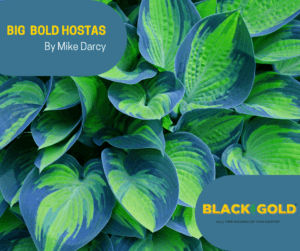
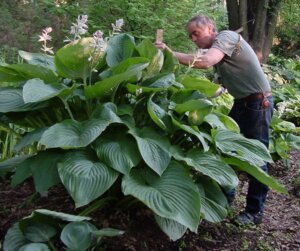
Not all hostas are going to be ‘big and bold’ like ‘Empress Wu’, (photo above), but being one of the largest growing hostas, it certainly does make a statement! At the opposite end of the spectrum is a hosta like the miniature ‘Country Mouse’. photo below. It is small growing and perfect for a trough or rock garden Within the hosta ‘world’ there is a huge range to choose from with regard, not only to the size of the plant, but to leaf color, size, texture, variegation, sun tolerance, and flower color.
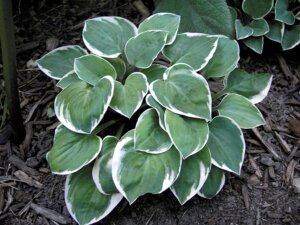
At one time, hostas were thought of as an old-fashioned plant because they were so often used in gardens in the early 1900’s. They were commonly used in a mixed border garden and most hostas at this time were generally a plant with large green leaves and thus, the common name of Plantain Lily. The plain green leaf hosta has evolved with many new cultivars on the market, and they are much more than just a plain green leaf plant.
Hostas are native to eastern Asia and are now commonly planted throughout the United States. Generally considered shade plants, some hostas will tolerate sun, but I doubt if any would be happy in the intense heat we are getting this summer in the Pacific Northwest! Generally, those with white and/or yellow in the leaves are the least sun tolerant. Since there is such diversity withing this group of plants, check at a local garden center for advice. When visiting a local garden center, if plants are under a shade cloth, this would probably be an indication that they need some protection from the sun.
Hostas like a soil that has been enriched with an organic compost such as Black Gold® Natural & Organic Garden Compost Blend or a mix with coir such as Black Gold® Natural & Organic Cocoblend Potting Mix. Coil has excellent moisture retention qualities. Hostas make excellent container plants on a deck or patio where there is some shade. Their flowers are a summer bonus with spikes of blue, white, or lavender, with some being quite fragrant. All hostas go dormant in the winter and a winter mulch is helpful.
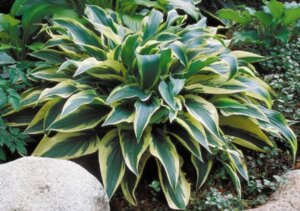
A medium size hosta is ‘Wolverine’ with a mound of long tapered blue green leaves with rippled yellow edges that age to white. Pale lavender flowers in late summer.
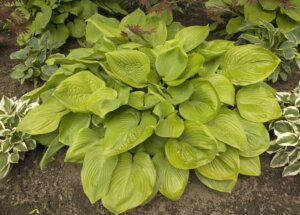
One of the most popular of the large growing hostas is ‘Sum and Substance’. With chartreuse, yellow leaves, this hosta has pale lavender flowers in the summer. This is a large grower, up to five feet and is spectacular in a large container.
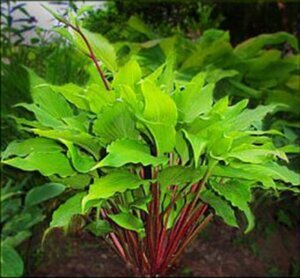
Earlier this year, I planted several new hostas in my own garden and one is ‘Red Dragon’, pictured above. Not only did I like the shiny green leaves, but the red stems are what drew my eye to this hosta. It is a medium size grower and while in a shady location, it has held up well in the summer heat.
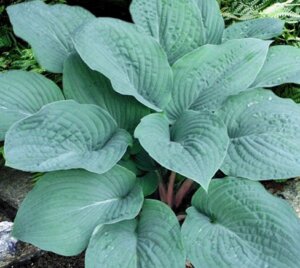
Sometime part of the fun in buying a new plant is the name. ‘Blueberry Muffin’ is a good example. The powdery blue leaves make quite a show and this is another hosta that would make an excellent container plant and would certainly attract attention.
It is not too late to plant hostas and if there is a particular leave pattern or color you are seeking, now would be an ideal time to be certain you are getting what you want. This would also be a good time to let the weather be an indicator as to which plants have survived with little or no heat and sun damage.
Once established in the garden, hostas are very reliable for coming up each spring season. If you have an established plant, they are also very easy to divide during the winter months. They are often overlooked as container plants and can provide some wonderful foliage during the summer months. Give them a soil rich in organic matter, some summer fertilizer, and a shady location, and they should thrive for many years.
All photos are courtesy of Sebright Gardens, a hosta nursery in Salem, Oregon.

